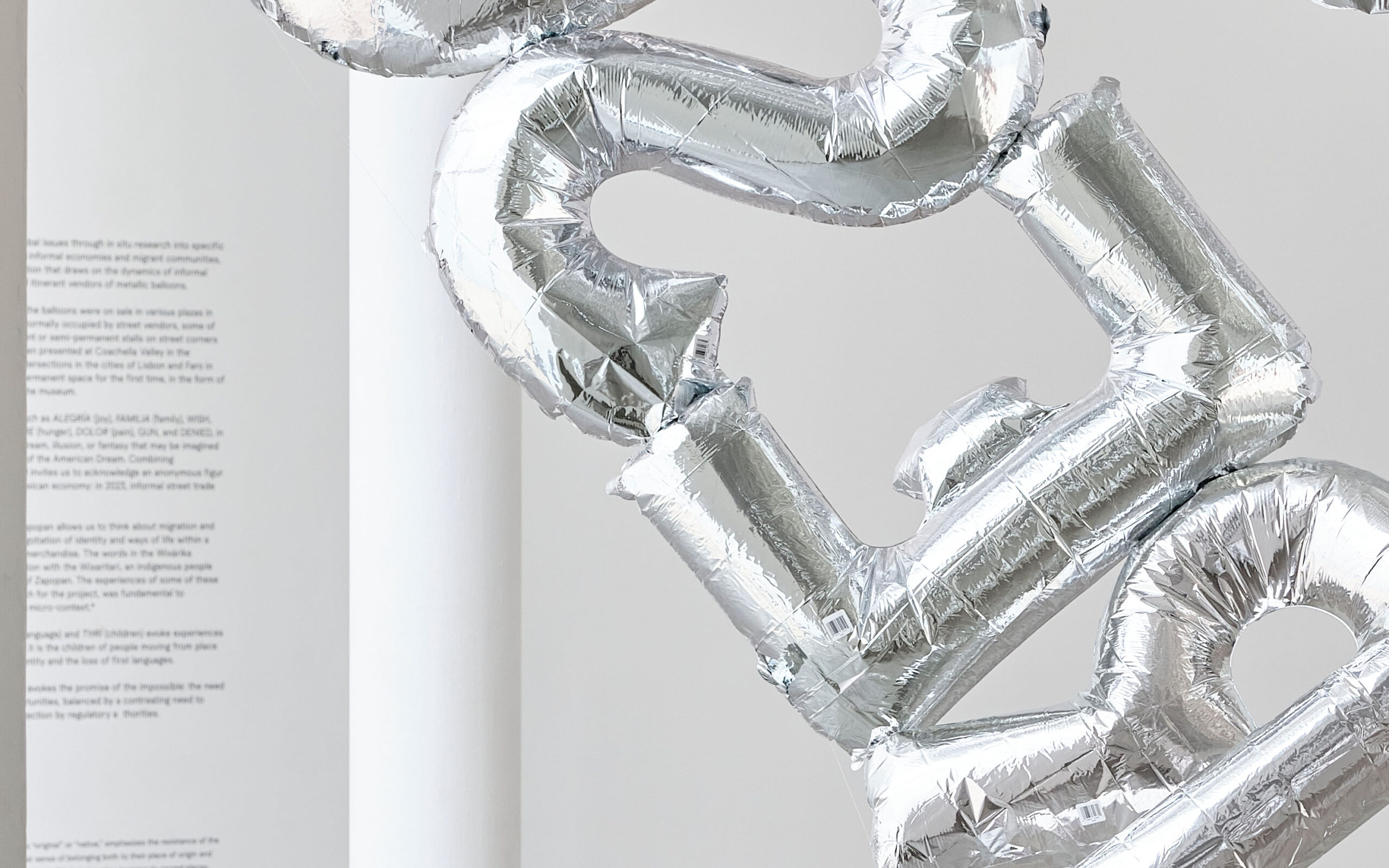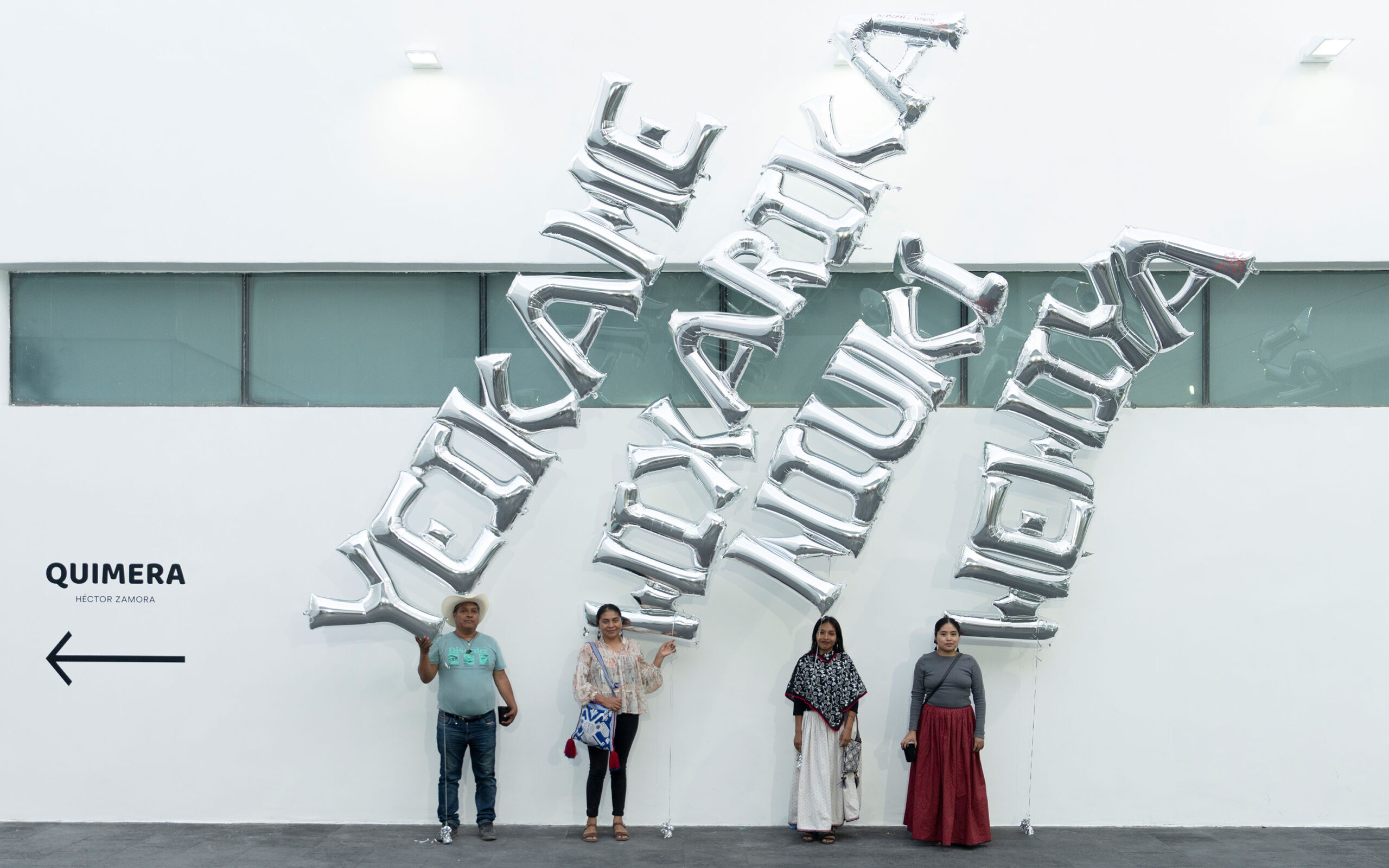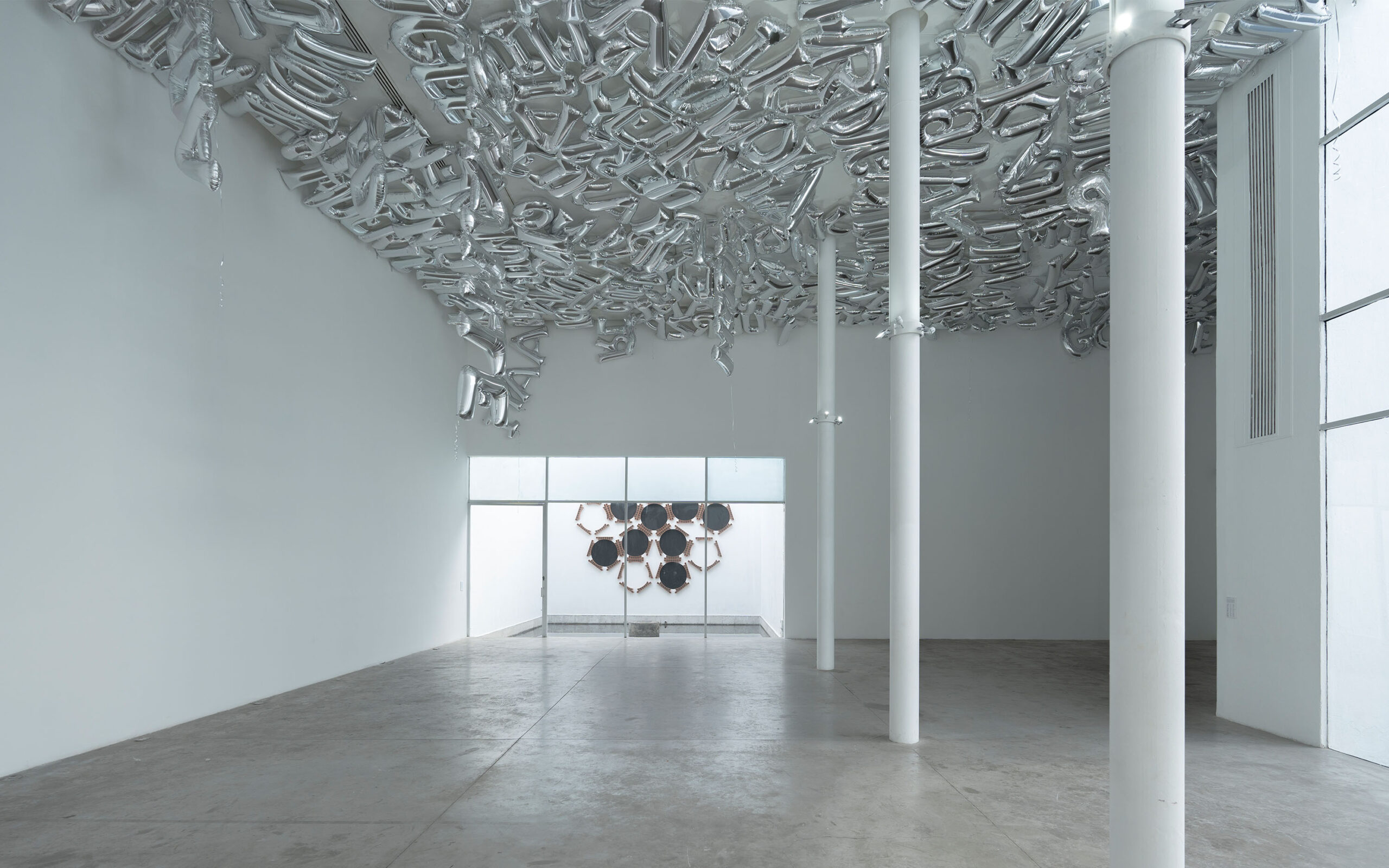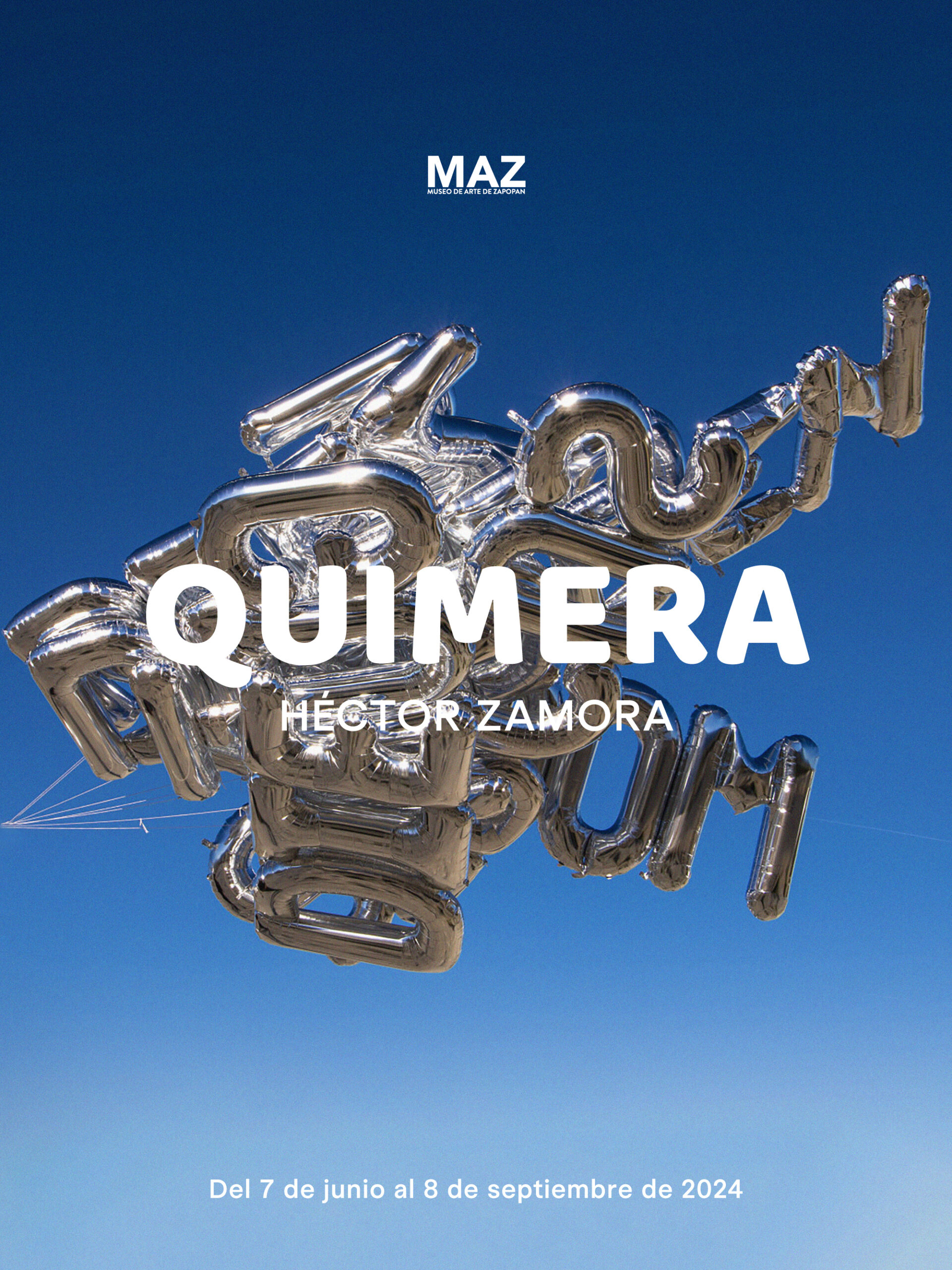












Chimera | Héctor Zamora
From June 6th to September 8th, 2024
Sala Luis Barragán
The work of Héctor Zamora explores global issues through in situ research into specific localized ambits. Paying homage here to informal economies and migrant communities, he presents Chimera, a performative action that draws on the dynamics of informal Mexican street trade, through a group of itinerant vendors of metallic balloons.
During the inauguration of the showing, the balloons were on sale in various plazas in the historic center of Zapopan, spaces normally occupied by street vendors, some of them itinerant, and others with permanent or semi-permanent stalls on street corners or in makeshift markets. After having been presented at Coachella Valley in the California desert and on avenues and intersections in the cities of Lisbon and Faro in Portugal, Chimera is now occupying a permanent space for the first time, in the form of an installation, floating in the gallery of the museum.
The balloons are in the form of words such as ALEGRÍA (joy), FAMILIA (family), WISH, HOME, and WONDER, as well as HAMBRE (hunger), DOLOR (pain), GUN, and DENIED, in order to evoke the chimerical idea ―a dream, illusion, or fantasy that may be imagined as possible, without actually being so― of the American Dream. Combining monumentality with a sense of mirage, it invites us to acknowledge an anonymous figure that in fact constitutes a pillar of the Mexican economy: in 2023, informal street trade accounted for 28.18% of domestic GDP.
The presentation of the installation in Zapopan allows us to think about migration and the exchange of goods as a constant negotiation of identity and ways of life within a system that transforms everything into merchandise. The words in the Wixárika language underline the relation of migration with the Wixaritari, an indigenous people who sell handicrafts in the central area of Zapopan. The experiences of some of these vendors, shared in the course of research for the project, was fundamental to reformulating Chimera within a Mexican micro-context.*
Balloons forming words such as NIUKI (language) and TƗƗRÍ (children) evoke experiences shared by migrants all around the world: it is the children of people moving from place to place who confront issues of dual identity and the loss of first languages.
In the installation, every glimmer of light evokes the promise of the impossible: the need for visibility in ensuring economic opportunities, balanced by a contrasting need to maintain invisibility, in order to avoid detection by regulatory authorities.
* The word KIEKAME, which may be translated as “original” or “native,” emphasizes the resistance of the Wixaritari to being labeled as “migrants” and their sense of belonging both to their place of origin and wherever they happen to be residing. The word YEIKAME (pilgrim) evokes journeys to sacred places, while the word NUIWARI (rebirth) is associated with the journey that leads to a new life, whether motivated by the need for medical treatment or in search of employment opportunities in the creation and sale of handicrafts. WEWIYA (creation/handicraft) and ƗKITISKA (sample) allude to the role of creation from the vantage point of the notion of WIMARI (containment): the act of containing and sustaining life as symbolized by the jícara, or gourd vessel, which preserves both memory and the welcome afforded to those arriving or returning.

